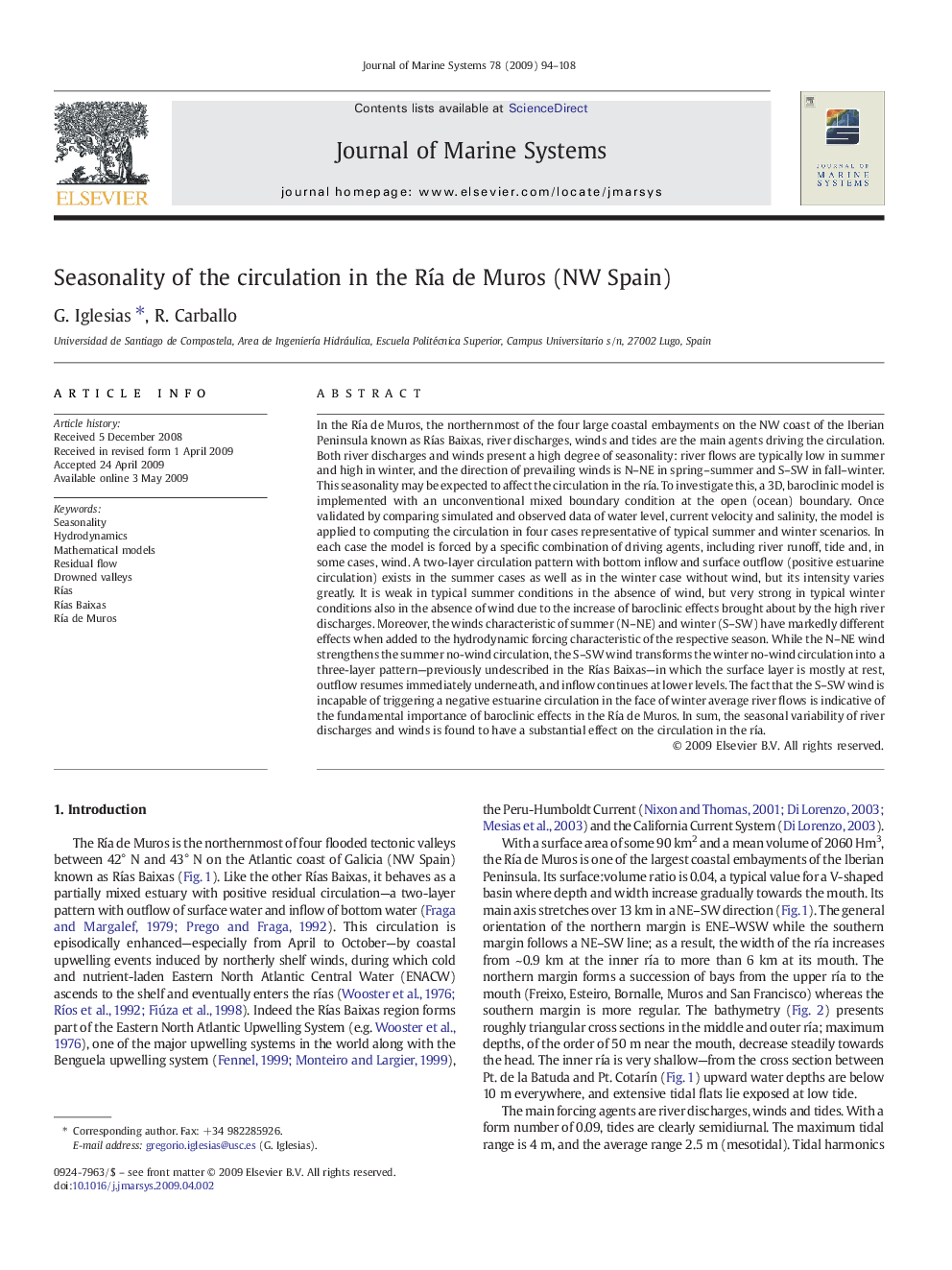| Article ID | Journal | Published Year | Pages | File Type |
|---|---|---|---|---|
| 4548867 | Journal of Marine Systems | 2009 | 15 Pages |
In the Ría de Muros, the northernmost of the four large coastal embayments on the NW coast of the Iberian Peninsula known as Rías Baixas, river discharges, winds and tides are the main agents driving the circulation. Both river discharges and winds present a high degree of seasonality: river flows are typically low in summer and high in winter, and the direction of prevailing winds is N–NE in spring–summer and S–SW in fall–winter. This seasonality may be expected to affect the circulation in the ría. To investigate this, a 3D, baroclinic model is implemented with an unconventional mixed boundary condition at the open (ocean) boundary. Once validated by comparing simulated and observed data of water level, current velocity and salinity, the model is applied to computing the circulation in four cases representative of typical summer and winter scenarios. In each case the model is forced by a specific combination of driving agents, including river runoff, tide and, in some cases, wind. A two-layer circulation pattern with bottom inflow and surface outflow (positive estuarine circulation) exists in the summer cases as well as in the winter case without wind, but its intensity varies greatly. It is weak in typical summer conditions in the absence of wind, but very strong in typical winter conditions also in the absence of wind due to the increase of baroclinic effects brought about by the high river discharges. Moreover, the winds characteristic of summer (N–NE) and winter (S–SW) have markedly different effects when added to the hydrodynamic forcing characteristic of the respective season. While the N–NE wind strengthens the summer no-wind circulation, the S–SW wind transforms the winter no-wind circulation into a three-layer pattern—previously undescribed in the Rías Baixas—in which the surface layer is mostly at rest, outflow resumes immediately underneath, and inflow continues at lower levels. The fact that the S–SW wind is incapable of triggering a negative estuarine circulation in the face of winter average river flows is indicative of the fundamental importance of baroclinic effects in the Ría de Muros. In sum, the seasonal variability of river discharges and winds is found to have a substantial effect on the circulation in the ría.
